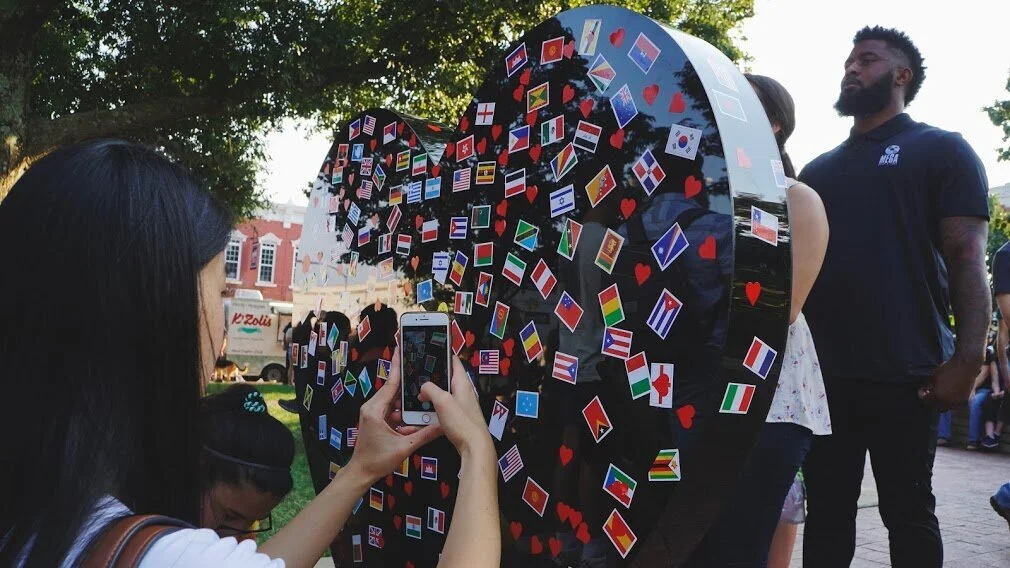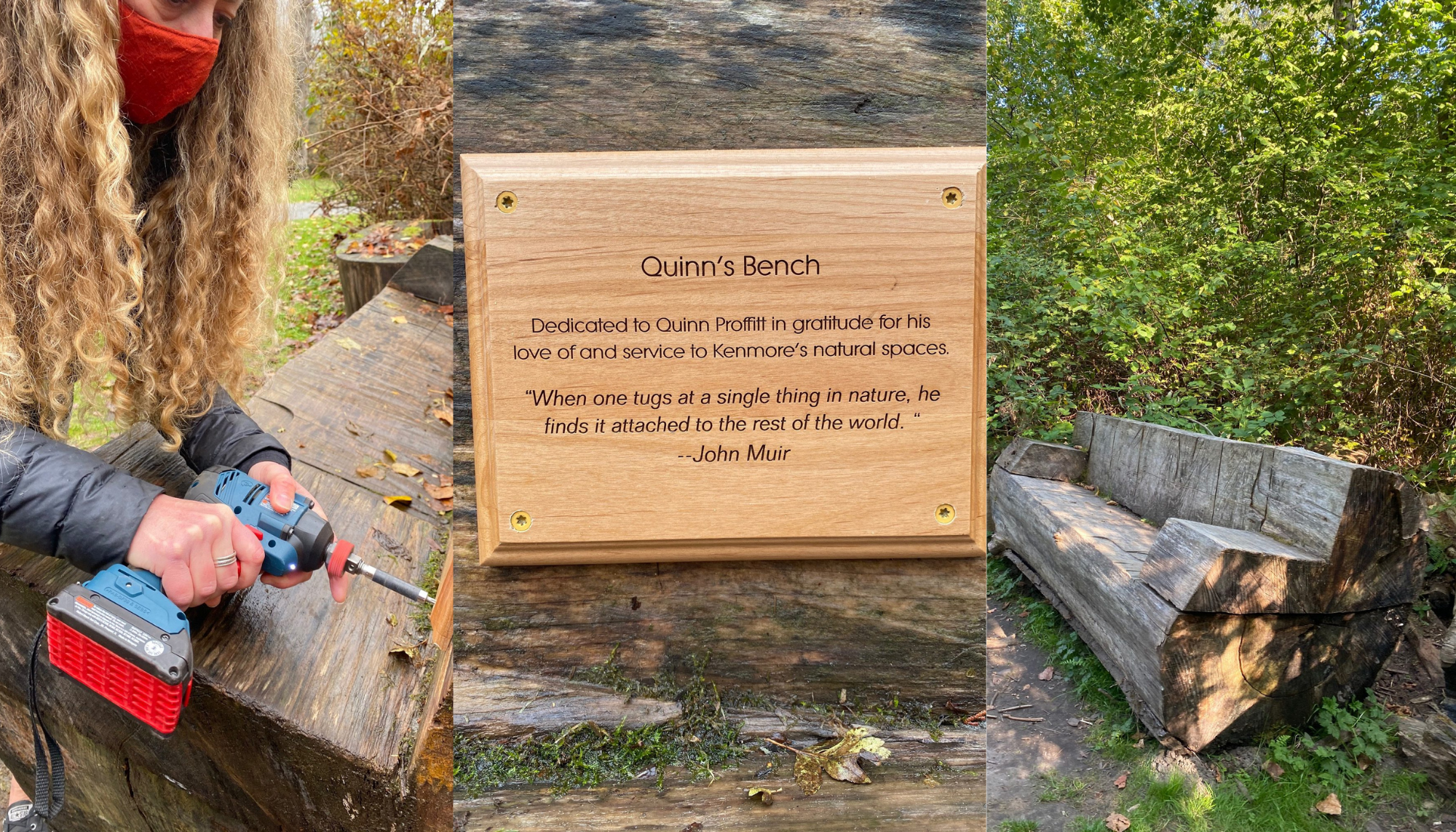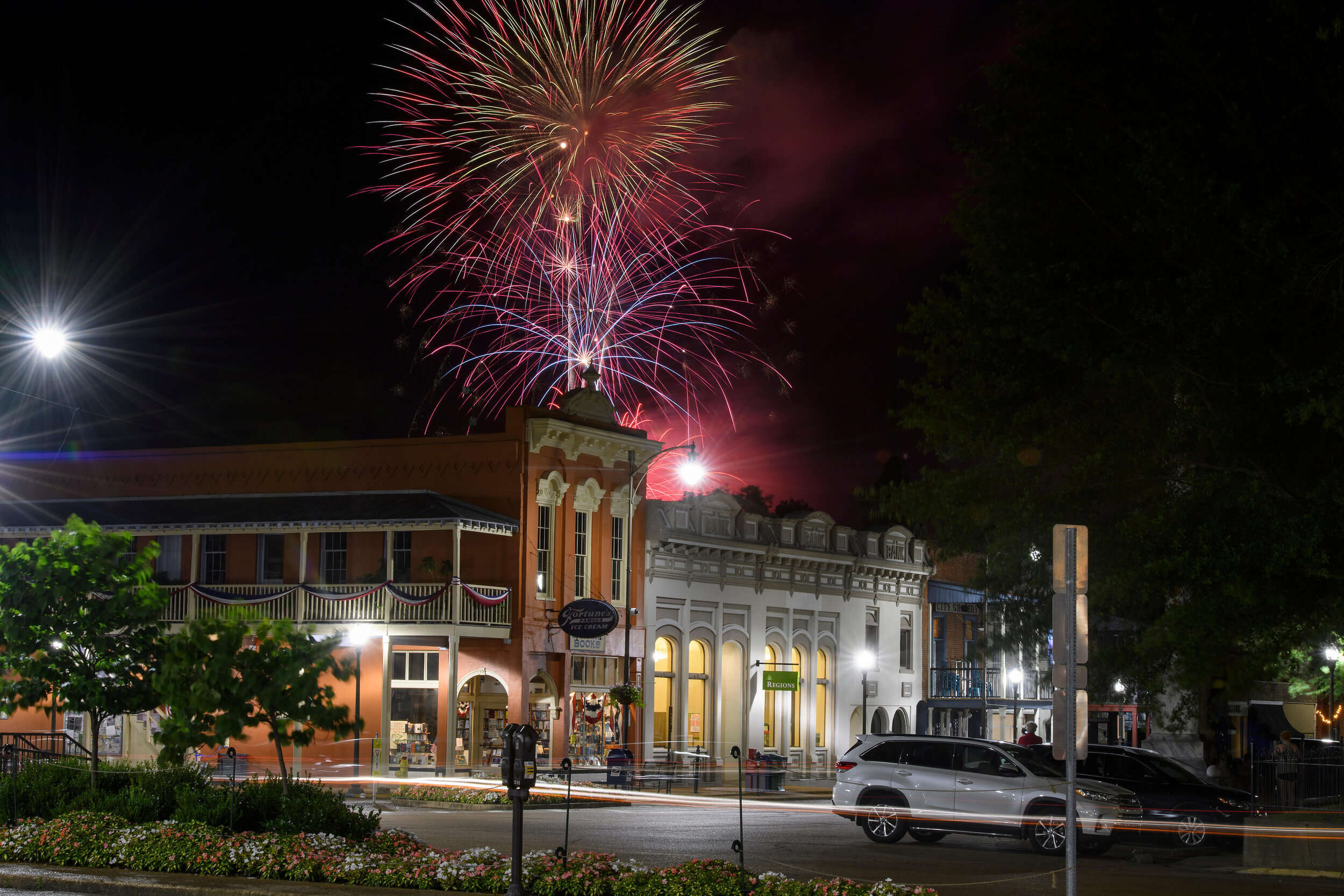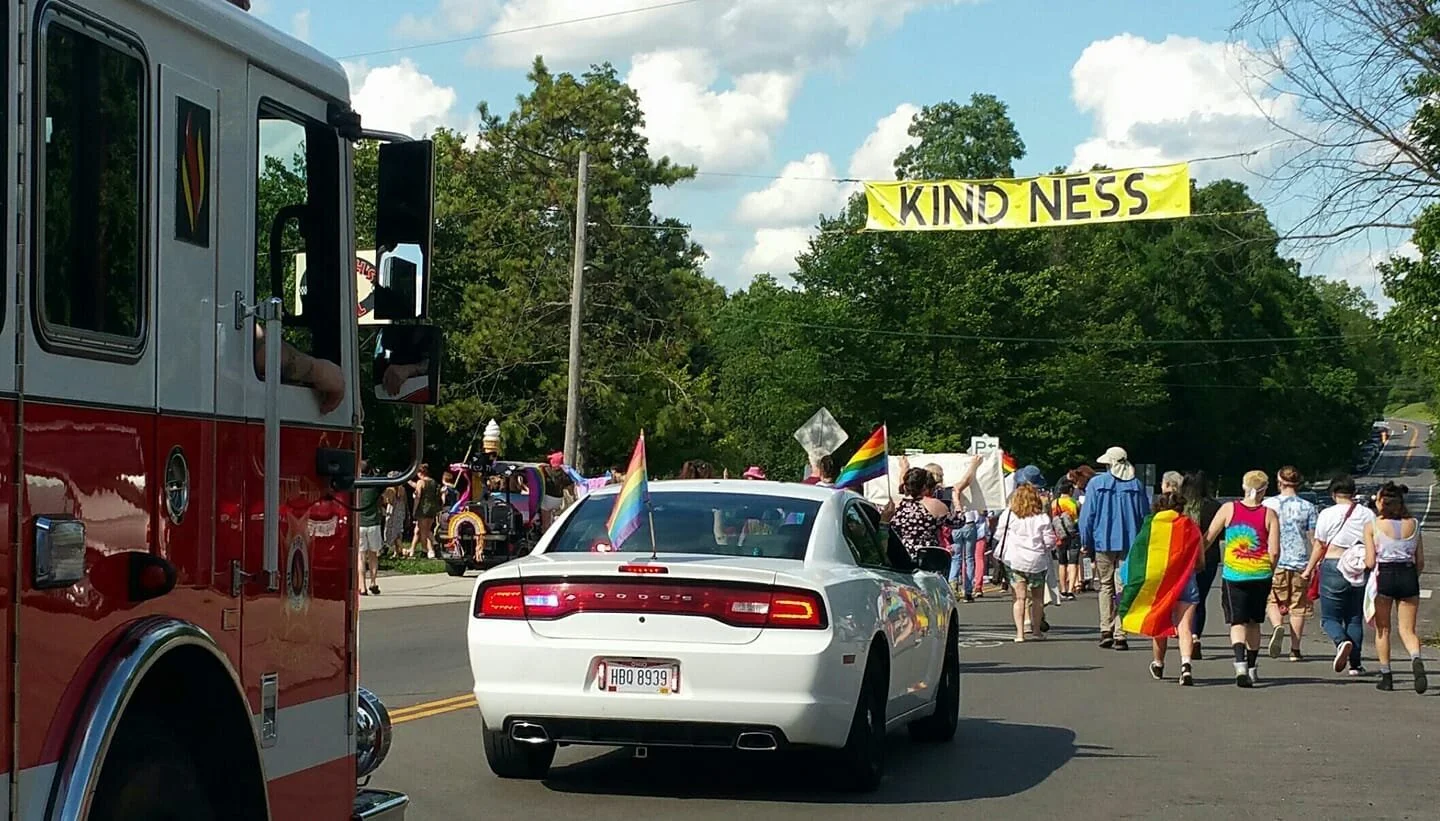Strong Towns Members Weigh in on Round 2 of the Strongest Town Contest (Part 2)
Yesterday, four Strong Towns members weighed in on four of the eight remaining contestants in this year’s Strongest Town contest: Bismarck, Lockport, Middleton, and Northfield. Today we’re back with member commentaries on the other four cities:
Bentonville, Arkansas
Kenmore, Washington
Oxford, Mississippi
Yellow Springs, Ohio
Remember, voting for Round 2 closes at noon CDT tomorrow, Thursday, March 25. Give these a read, and then follow the links to below to vote!
What is one thing about this city (or that this city is doing) that most reflects a Strong Towns approach?
Bentonville is a great demonstration of the vibrancy and creative energy that newcomers bring to a town or a city. In the last 20 years, Bentonville’s population has more than doubled. This has brought about an expansion of the city and an exponential increase in the social and recreational assets available to residents and visitors alike. There’s a lot of good change going on in Bentonville!
The city’s leadership on housing has meant that property owners throughout the city have the freedom to build ADUs to create additional housing units or short-term rentals. Builders are adding density to the historic downtown core and it appears that there is a commitment to provide more housing types within the city to take into account the increase of new residents. These actions are opening up the city to more productive growth. It is exciting to see the burst of beneficial activities that occurs when a city fosters a climate that says yes to new contributions of time, talent, and resources within the city.
What impresses me about Bentonville’s evolution is the way that they have built up a network of pedestrian and cycling routes within their downtown and out into the rest of the city. It’s great to see them using pilot projects to add slow-street demonstrations and bike-lane projects. They are making it easy to access a growing swathe of the city without a vehicle. This benefits residents, attracts visitors, and creates the types of serendipitous encounters within the city that can bring about a fresh new wave of creative activity.
What is one thing that seems to you to be an obstacle or challenge to this city’s present or future financial strength and resilience
Planned projects within the city have increased 46% in the past year and every indicator suggests that Bentonville is in another phase of the growth cycle. The temptation in such a situation is to splash the cash around in order to build more public assets as attractions for visitors and residents. The challenge will be to rein in that public investment so that the city does not end up with a maintenance obligation that exceeds the revenue-generating capacity of its productive neighbourhoods. Their reliance on a sales tax alongside property taxes means that a downturn will strain them far more and this volatility should promote cautious public investment strategies.
What is one question you would like to see us ask this town’s representatives?
My question for Bentonville’s representatives is: Does your city have a strategy in place to price-in the long term costs of housing development at the edges of the city? Or is the city permitting the city’s lateral growth without factoring in the true cost of such extension?
Any final thoughts on this city's submissions for Round 1 and Round 2?
I think Bentonville is an impressive contender in this year’s Strongest Town competition with its booming downtown, active transportation network improvements, and its city-wide permission for accessory dwelling units.
Norm Van Eeden Petersman is a pastor and a Strong Towns member in Delta, BC who blogs about local issues at www.onthefenceinladner.ca. You can connect with Norman on Twitter at @normvep.
What is one thing about this city (or that this city is doing) that most reflects a Strong Towns approach?
Kenmore is an impressive community. The City has taken an exciting step to ensure financial security by creating a long-term Financial Sustainability Plan (FSP). Not only was Kenmore able to critically evaluate their spending, discover efficiencies, and prepare for the future financial health, they did so with robust community input during the pandemic. We often say that if you want to know where a city’s priorities lie, look to its budget. Through the FSP, Kenmore worked hard to ensure the City’s budget reflected the community’s priorities and safeguarded resources for those priorities in the future. Even more impressive, Kenmore recognized and accounted for their depreciating infrastructure assets (e.g. bridges and roads) in this plan and created a sinking fund for save up for the inevitable maintenance and replacement costs.
What is one thing that seems to you to be an obstacle or challenge to this city’s present or future financial strength and resilience?
I think the biggest obstacle facing Kenmore will be managing growth pressures without sacrificing community wellbeing. As of Nov. 2018, Kenmore was advertising 51 acres for large scale developments. These types of massive development projects are the antitheses of the Strong Towns approach. It will be important for Kenmore adopt and enforce development regulations needed to ensure that developers pay their fair share and the growth is incremental, inclusive, and affordable.
What is one question you would like to see us ask this town’s representatives?
The Round 1 and 2 submissions made no reference to race or equity. How are you working to intentionally engage and serve your low-income and minority residents?
Any final thoughts on this city's submissions for Round 1 and Round 2?
On its face, Kenmore is a very Strong Town; however, in a region with a massive housing shortage and an affordability crisis, I would like to see them play a more active role in addressing housing issues. Reducing barriers to affordable housing is a great first step, but I’d challenge the community to take a more progressive role through development requirements and incentives.
Katy Shackelford is an innovative accredited urban planning professional with over nine years of experience. She specializes in transportation planning, economic development, and public policy and has a talent for producing transformative community impact using infrastructure investment. You can connect with Katy on LinkedIn and on Twitter at @KLShack.
What is the one thing about this city that most reflects Strong Towns?
The strongest part of their submission in both Round 1 and Round 2 is the financial solvency piece. The initiative required to broker a deal with the local hospital resulting in a $30 million trust fund that continues to grow is impressive. Having the hospital purchase the property is of greater community significance than had it been a commercial developer. In addition, the change to higher density building that incorporates zoning to allow residential units on upper floors is encouraging. The development of Belle Rivers within current city limits (lease to own properties) with its mission to provide both affordable rental housing and affordable home ownership is terrific. I wish we did this in our community!
What is the one thing that seems to be an obstacle or challenge?
I was troubled by the little emphasis on citizen volunteerism or non-profit groups who support city initiatives. I keep thinking “top down, top down approach.” When asked how the community participates in change/decision making, they answered with a list of typical government-led options (boards, commissions, public government meetings) but no mention of private supporters. A few months ago Strong Towns featured an article about successful ways to engage your community in the process of change. It had a great message about meeting the individuals, the neighbors who live in the town and incorporating their needs/wishes into the fabric of change. Frankly, the good people of Oxford may be doing this, but it isn’t reflected in their submission.
What is the one question you would like us to ask a city rep?
My question would be: How did your city city benefit from various citizen groups, neighbors and individuals to help implement and support change in your city? As examples: How well does your city government receive input from an organization who supports the needs of the disabled in your community? How does your city government include local arts organizations in planning aesthetic additions/improvements to the community? Do your government representatives visit neighborhoods and ask the citizens what is needed (recognizing that the pandemic limited these in person actions in 2020)? And part two, how can you better recognize the efforts of these private groups/individuals as you showcase the strengths of your city?
Any final thoughts on this city’s submissions for Round 1 or Round 2?
Their slogan—”We Get to Live Here”—is terrific, short and cute.
The Oxford submission did a very good job of responding to the questions asked of them. Some of the submitters didn’t actually answer the questions as asked. I did find Oxford’s submission very government-heavy. Oxford apparently has a strong relationship with the University, but that is also a state government entity. The submission shows their strengths easily, but there is little reference to private partnerships with community groups or emphasis on individual volunteerism to enhance the community. I hope that more of this emerges during the next round.
Their new housing initiatives are dynamic, but I’d have liked to see some indicators that there are initiatives in place to restore/reuse current older housing.
I was not at all impressed by the photos they chose to showcase their environment. Those photos look like stock selections from an ad campaign.
The component concerning their financial stability is a terrific base for the future of the city.
I believe that Oxford is a strong position to push their creativity and ability to create change by further partnering with the community at large.
Catharine Early has more than thirty years of community activism experience, beginning in Baltimore, Maryland where she and her neighbors began the first recycling effort in the entire city. Catharine also wrote grants and fundraising campaigns for GEDCO, an organization invested in rehabbing and preserving old buildings for specific community use (hospice, AIDS houses, drug & alcohol halfway houses, homes for abused women.) Professionally, she managed a citywide community center in West Lafayette, Indiana where non-profits of all kinds—alongside community dance, music, yoga, and other community activities—met for meetings and events. Since moving to Oswego, New York nearly fourteen years ago, Catharine has served on the City Zoning Board of Appeals, and is a founding member of the Oswego Renaissance Association, now serving on the Board of Directors. She has a passionate conviction that architectural preservation and intelligent re-use of buildings in historic communities go hand in hand. You can connect with Catharine via email at earlyworksny@gmail.com.
What is one thing about this city (or that this city is doing) that most reflects a Strong Towns approach?
If I were to put together a Strong Towns tour for myself, Yellow Springs would be top of the list. I’ve never been there but I have a feeling I will be there soon. Leading with a “village value”of being welcoming to all persons and fostering diverse relationships, they were early adopters of same-sex marriage.
Most importantly, they have done what many are loath to admit—racism is a public health crisis. And they don’t just talk about it, they wear it on their sleeve—from a youth-led and highly visible protest wall, to the inclusion of a dedicated social worker in their policing, and an active “Justice System Collaborative Commission.”
Yellow Spring’s advocacy for social justice is front and center not because they say so, but because:
They live it: they govern themselves under six values that permeate throughout government. And it shows.
Others validate it: 300,000+ visitors for their YS Pride Week Celebration, neighborhoods surrounded by preserved farmland.
Yellow Springs is a true Strong Town!
What is one thing that seems to you to be an obstacle or challenge to this city’s present or future financial strength and resilience?
Yellow Springs has done the stupendously difficult job of creating a systemic way of becoming and continuing to be a strong town in the future. Their achilles heel appears to me to be their waning population, a trend that has been consistent since the 1980 census. With a population of 3,487 in the 2010 census, the village is well below their population of 4624 in 1960. The bright spot is that they are estimated to have had a population of 3,744 in 2019 according to the U.S. Decennial Census.
Yellow Springs appears to be doing everything right. But that can only continue if you have the continued support of the people that live there. If the population continues to wane, will “the will” remain to continue this path. And if Yellow Springs is a great place to live, why have so many people left?
What is one question you would like to see us ask this town’s representatives?
Yellow Springs lost residents from 1880 to 1920 but then had huge population growth from 1930 to 1970. And then a significant decline since then (up to 2010.) I wonder what has been the impetus for these wild swings in population, particularly the steep population loss since 1980.
With the rich history of inclusion and equity, particularly around escaped slaves and their resistance to capitulating to the Red Scare antics in the 1950s, it appears that equity and inclusion has been part of the life blood of the village. They continue to be diverse today. I wonder though, if any demographic is disproportionately represented in the people that are leaving.
Sal Galdamez is the Founder of York XL, a neighborhood empowerment organization that brings people together to imagine and then passionately create empowered neighborhoods. He was born in Chalatenango, El Salvador, and came to the United States nearly 40 years ago. He has a BS in German and MS in Education from Duquesne University in Pittsburgh, Pennsylvania. A longtime member, Sal has been featured numerous times on the Strong Towns site, including interviews for podcasts, webcasts, and articles.
Round 2 Matchups
Bentonville, AR vs. Kenmore, WA | Oxford, MS vs. Yellow Springs, OH | Lockport, IL vs. Middleton, WI | Bismarck, ND vs. Northfield, VT
NOTE: The voting forms are located at the bottom of each match-up. Vote by 12 noon CDT on Thursday, March 25th




